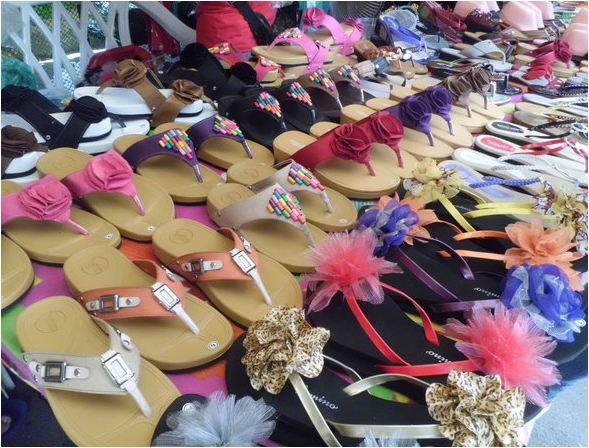Text and photos by SHIELA MAY ABALLA
THE first rain in the month of May is believed to be a blessing. That is why people of Gapan City considered the heavy downpour last May 1 as an additional blessing for their successful Tsinelas (Slipper) Festival celebrated that same day.
Gapan City, located at the southernmost part of Nueva Ecija in Central Luzon, is the next town from San Miguel, Bulacan going to the north. The name of the city originated from the word gapang or crawl because of the many crawling plants found there.
Aside from the production of rice, Gapan City is also popular for its production of slippers. The annual Tsinelas Festival began in 2002 to mark the first anniversary of the cityhood of Gapan and to promote the slipper industry.
Gapan was the oldest town in Nueva Ecija before it was declared a city in August 25, 2001.
The Liwag family was the one of those who started the slipper industry in Gapan. Because of the good quality of the slippers they made, that product became popular. The number of slipper makers in the city increased as the industry prospered.
Edgardo Tolentino, one of the people in charge of the event, said this year’s celebration of the Tsinelas Festival was moved to coincide with the feast of the Divina Pastora or the Divine Shepherdess — the patron saint of the city, to attract devotees from neighboring towns.
Stalls of slippers already lined the city plaza one week before the day of the festival. It gave the people a lot of time to choose from the different slippers, with prices ranging from P50-P200 per pair depending on size and style.
The annual competition for the giant slipper of the town highlighted the festival. Fifteen giant slippers, seven-feet tall, competed for the title and the cash prize of P20,000.
“Di ko kasi sineseryoso nung una ‘yang pagsali diyan, basta may mai-represent lang ako, okay na (I wasn’t serious in joining the competition at first; as long as I have something to represent, it was okay),” Rolando Pascual, owner of Bagong Likha Footwear, said. “Nag-aabala rin ako, bakit hindi ko pa pagbutihin?(Since I spent time for it, so why not do my best)?”
Pascual, a slipper maker for more than 10 years now, won the first prize in this year’s competition. For three consecutive years (2006-2009), he won consolation prizes. Then he bagged third place in 2010, and second place last year.
“Kami, katulad noong mga nakaraang taon kapag nananalo kami, bumibili kami ng mga items na kailangan sa gawaan (We, like when we won in previous years, we buy items which we need for production),” Pascual said.
From the cash prizes he had won, he bought a cutter and a generator. He has not yet decided on what to buy this year.
Pascual said it took him three days to make his winning entry, spending P3,000 for materials. His expense was cheaper compared to the other contestants, who spent an average of P5,000.
A street dancing competition among students from the different barangays of the city was held the day before the festival. This was followed by a parade participated in by devotees of the Divina Pastora. A replica of the patron saint and a child dressed as the Divina Pastora (identified as Mary Divine Lising) led the parade.
Then came floats that carried giant slippers, the city’s different bands, and pretty girls from various barangays. Some girls threw candies to the many people who braved the scorching heat of the sun to watch the annual parade.
The city mayor, vice mayor and other local officials were also seen walking in the parade. Celebrities like Diana Meneses and Enrique Gil joined the festival.
The giant slippers were displayed at the city hall after the parade.
Then heavy rains fell.
“Naisilong naman agad namin ‘yong mga tsinelas kaya maibebenta pa ‘yan (We were able to save the slippers from the rain immediately that is why we can still sell them),” Aiza Manson, a slipper vendor, said.
When the rain stopped, the slipper vendors opened their stalls again. They were open until midnight.
The slipper vendors are requesting the local government to provide a permanent location for their stores.
The government plans to imitate the Tsinelas Avenue in Liliw, Laguna (the slipper capital of the Philippines). Tsinelas Avenue is a street where stalls of slippers can be found.
It also provides the vehicles that slipper vendors use in going to trade fairs in Manila.
Gapan City supplies slippers to Baclaran in Paranaque City, and to other provinces in northern and central Luzon like Aurora and Isabela.
(The author is a journalism student of the University of the Philippines-Baguio, who is writing for VERA Files as part of her internship.)
